Today, we’ll be delving deep into one of the most beloved and versatile audio effects in the industry: the chorus effect.
This versatile tool, celebrated for its unique ability to transform and breathe life into music, is a beloved effect of producers across the globe.
Whether you’re crafting a rich guitar track, refining vocals, or building an immersive soundscape, the chorus effect holds the key to unlocking endless sonic possibilities.
In this article, we’ll explore:
- What the chorus effect is and how it’s defined in digital music ✓
- Different types of chorus effects and how they can be used ✓
- The role of pitch modulation in the chorus effect ✓
- A brief history of chorus pedals ✓
- The chorus effect in mixing & the influence of delay times and feedback ✓
- A technical overview of chorus effect parameters ✓
- How to apply the chorus effect across different instruments ✓
- Insider tips & tricks for maximizing the chorus effect in your mix ✓
Whether you’re new to music production or a seasoned pro looking to brush up on your skills, this comprehensive guide will provide you with everything you need to know.
It will empower you with the knowledge and confidence to use the chorus effect to its full potential.
So, let’s dive in…
Table of Contents
- What is the Chorus Effect?
- Chorus Effects: Stereo Chorus & Unique Mixing
- Using Chorus Effects for Unique Mixing Techniques
- A Little History: Chorus Pedals
- Pitch Modulation
- The Chorus Effect: Breaking it Down
- Exploring Additional Parameters: Mix, Phase & Tone
- Applying the Chorus Effect Across Different Instruments
- Tips & Tricks: Maximizing the Chorus Effect in Your Mix
- Final Thoughts
What is the Chorus Effect?
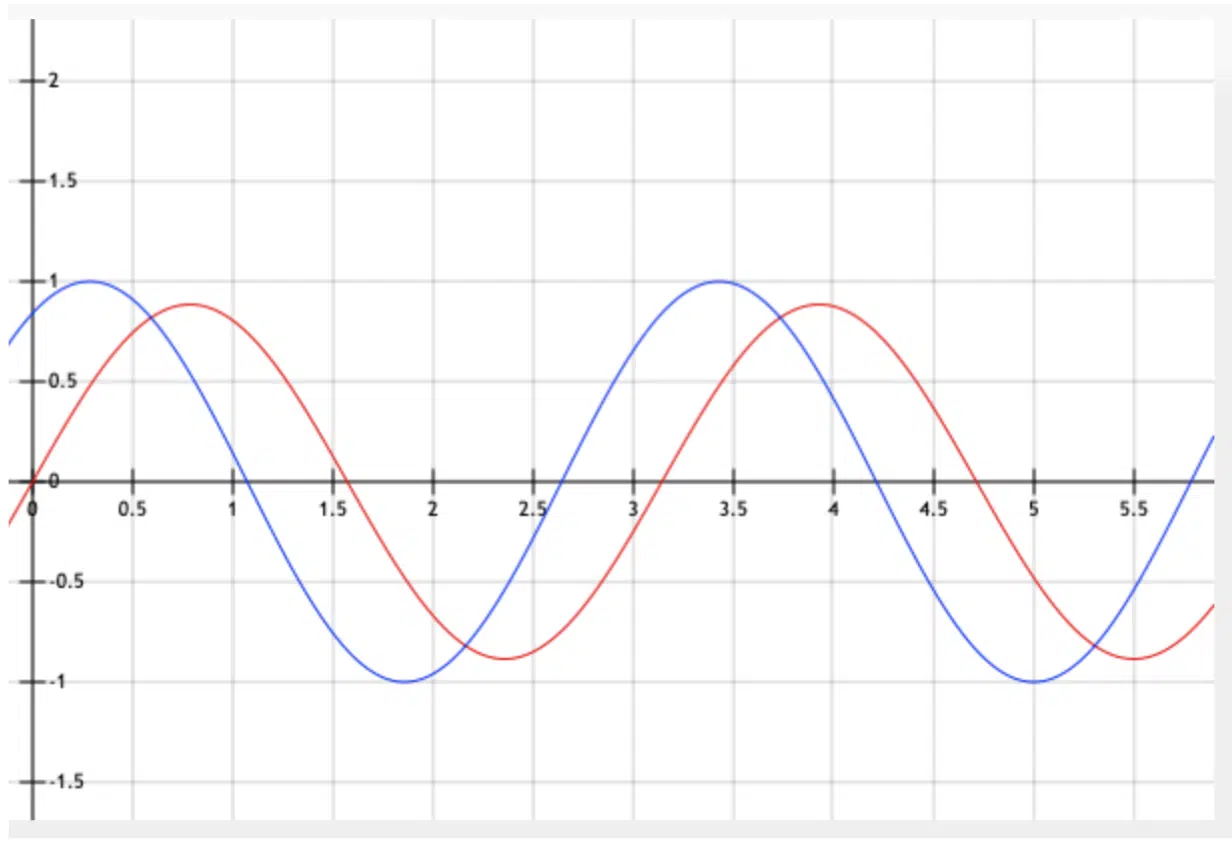
In blue, the original guitar signal, without effect. This signal is duplicated, delayed, and slightly pitch-shifted. The two signals mixed together form the chorus effect.
The chorus effect: if you’ve dabbled in audio production or spent some time around guitars and pedals, chances are you’ve come across this term.
But what exactly is it?…
Well, simply put, the chorus effect is an audio effect that gives the illusion of multiple voices or instruments playing simultaneously from a single source.
This is achieved by:
- Replicating the audio signal
- Slightly detuning it in pitch and time
- Playing it back alongside the original signal
This modulation effect creates a richer, fuller sound that’s comparable to a choir or an orchestra (hence the name “chorus”). This effect is not exclusive to music production.
It can also be heard in nature, where similar sounds, such as the chirping of a group of crickets or birdsong, produce approximately the same effect.
In the realm of digital music production, the chorus effect is a vital tool in the mixing process.
By subtly altering the pitch and delay times of the audio signal, you can create depth and width in the stereo field.
Therefore enriching the overall sound of the music.
Whether it’s applied to vocals, guitars, or other instruments, the chorus effect can dramatically enhance the texture and atmosphere of a track 一 transforming a simple melody into a complex and captivating musical piece.
-
The Impact on Vocals & Instruments
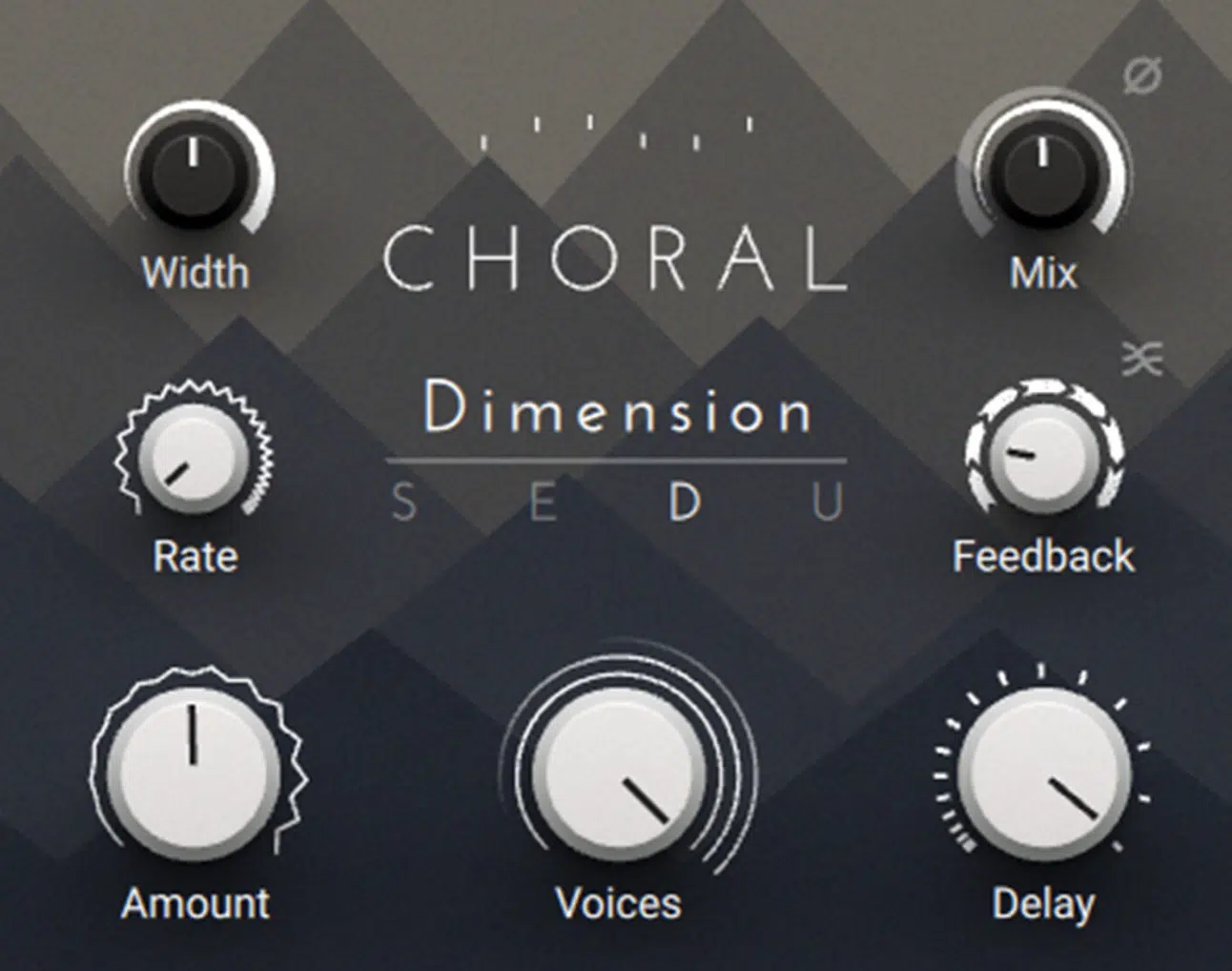
Now, let’s talk about the real-world application of the chorus effect… one of the primary uses is on vocals.
By applying the chorus effect to a vocal track, it adds depth and width, making a solo singer sound like a complete choir.
This can be especially effective on backing vocals 一 creating a lush and full harmonic background to support the lead vocal.
For instruments like guitars, the chorus effect works its magic by providing the illusion of several guitars playing at once.
It enhances the stereo field and gives an incredibly full and vibrant sound.
Also, it can take a simple guitar signal and transform it into something complex and beautiful, adding a sense of movement and life to the music.
And it’s not just for guitars either, the chorus effect can be applied to a wide range of instruments; each producing unique and interesting results.
NOTE: We will discuss these topics more in-depth later in the article.
Chorus Effects: Stereo Chorus & Unique Mixing

Among the different types of chorus effects, the stereo chorus holds a special place.
As the name suggests, Stereo Chorus is designed to enrich the stereo field of your mix.
By applying the effect to the left and right channels independently, it enhances the perception of width and depth in your music.
Typically, a stereo chorus will:
- Take an audio signal
- Split it into two
- Apply subtle variations in pitch & delay time to each signal before routing them to the left/right channels
The result is a rich, spatial sound that can bring a new dimension to your music 一 filling up the stereo field in a captivating way.
Remember, when using a stereo chorus, balance is key.
- Too much of the effect: can lead to a disorienting, ‘swirling’ sound
- Too little: may not have the desired impact
Remember, subtlety is often the secret to a professional-sounding mix.
Using Chorus Effects for Unique Mixing Techniques
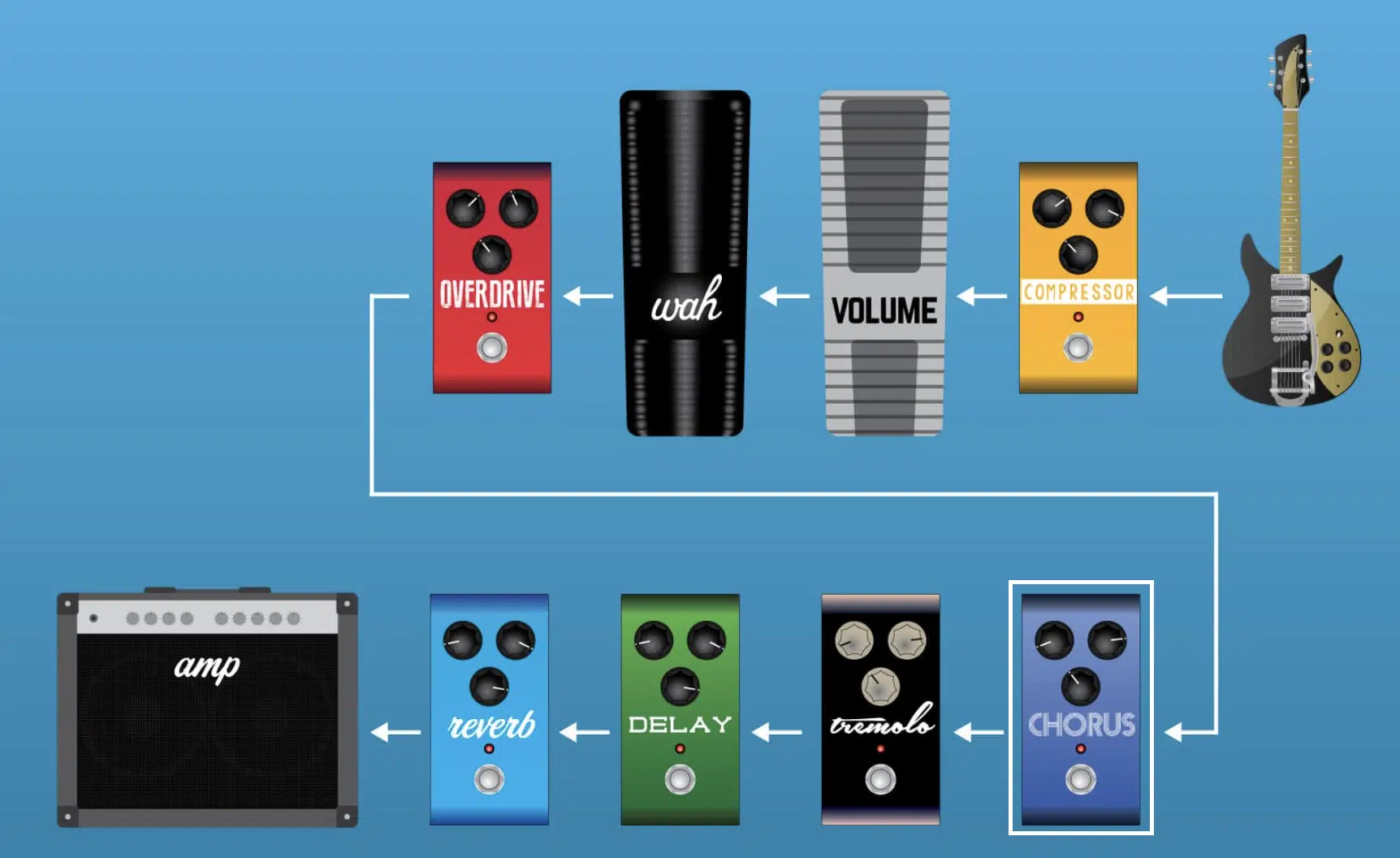
Now that we’ve covered the stereo chorus, let’s explore some unique mixing techniques using chorus effects.
Remember, the goal is to create a sense of depth and movement in your mix without overwhelming it.
A subtle chorus can be a game-changer when applied to backing vocals.
It can create the illusion of multiple singers 一 making your backing vocals sound fuller and more complex.
The same vocal processed with a chorus effect can provide a lush, textured background that complements the lead vocal.
Another technique involves applying chorus to a guitar track.
By doing so, you can create the illusion of several guitars playing at once (even if you only recorded one guitar part).
This can fill out your mix, especially in sections where the guitar is a key element.
A Little History: Chorus Pedals
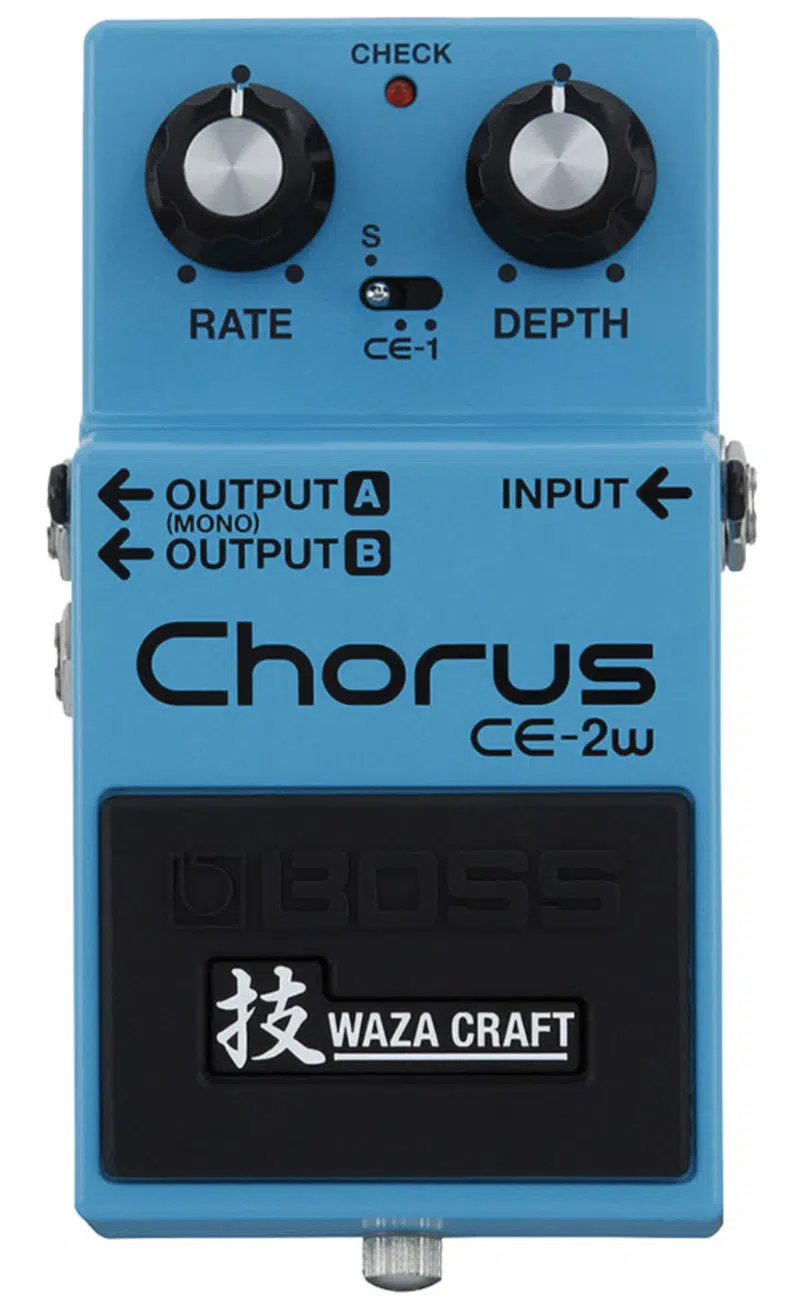
Diving a bit into history, the concept of the chorus effect can be traced back to the 1970s.
The birth of chorus pedals revolutionized the guitar sound, becoming a staple in every guitarist’s pedalboard.
Over the years, chorus pedals have evolved 一 with companies constantly innovating to improve their sound quality, versatility, and user-friendliness.
From analog to digital, stompbox to rack units, the range of chorus pedals available today caters to every possible taste and requirement (even with the same circuit).
When it comes to digital music production, the choice often lies between using chorus pedals and chorus plugins.
Both can produce the desired chorus effect, but they offer different experiences.
Chorus pedals provide a hands-on, tactile experience, allowing you to tweak parameters in real time.
On the other hand, chorus plugins offer convenience, with the ability to automate settings and save presets, providing a high degree of precision and control.
Pitch Modulation

At the heart of every chorus effect lies pitch modulation.
This process involves varying the pitch of the copied signal to create a detuned effect.
Chorus pedals are designed to simulate the slight pitch variations that occur naturally when multiple musicians play the same part.
This is what gives the chorus effect its unique, lush character.
The depth control on chorus pedals allows you to adjust the extent of this pitch modulation.
- Higher depth settings 一 Result in greater pitch variation, creating a more pronounced chorus effect.
- Lower settings 一 Offer a more subtle chorus, adding a touch of thickness and warmth to the sound without drastically altering the pitch.
This doesn’t just apply to physical chorus pedals, as shown above, you can achieve these effects with a digital pitch modulator.
-
Role of Pitch in Defining Sound Character
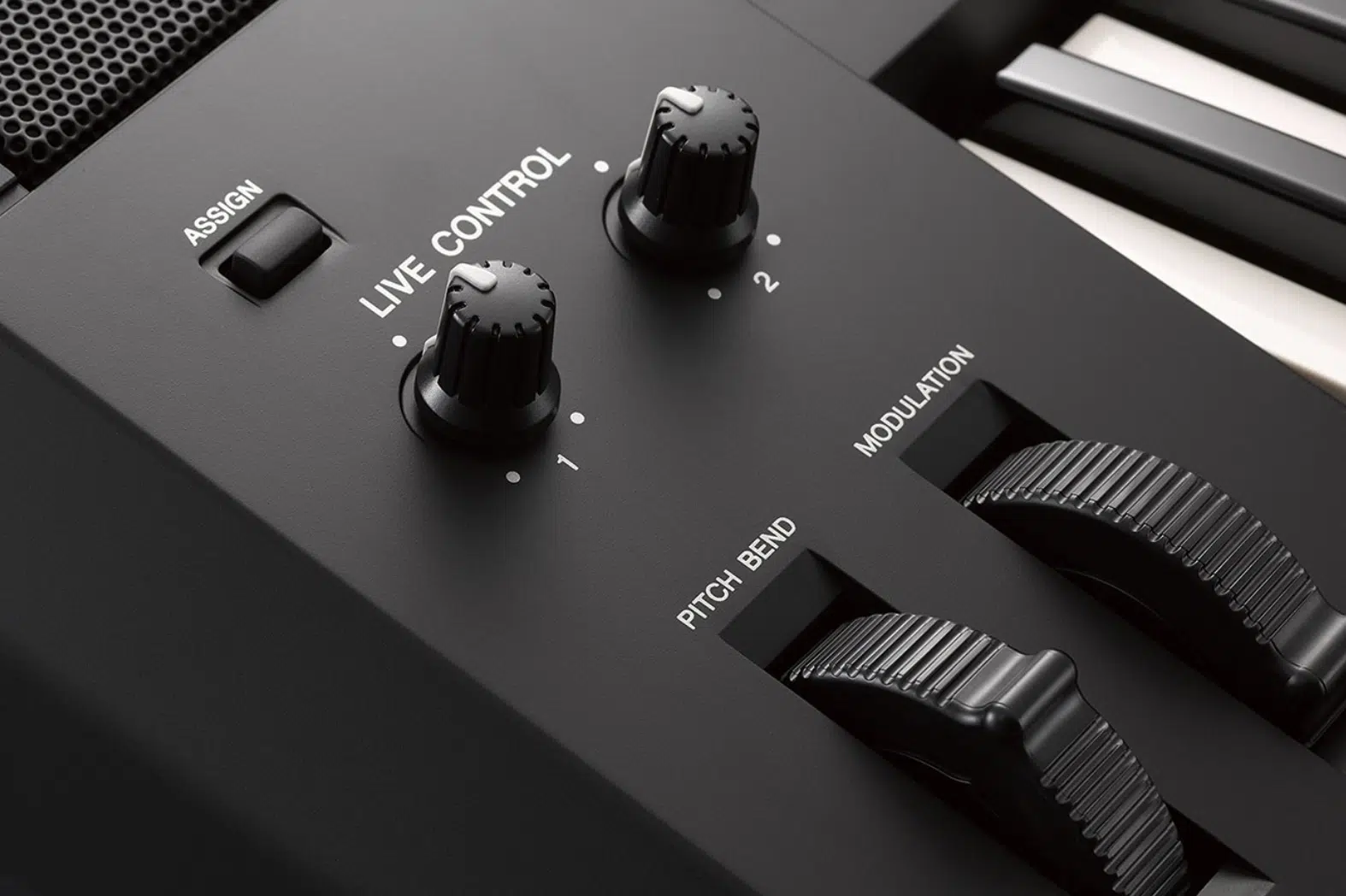
The role of pitch in defining the character of the sound cannot be overstated.
The chorus effect utilizes pitch modulation to create its distinctive sound, but how you choose to manipulate the pitch can greatly affect the final result.
If you’re seeking a more subtle chorus, you may prefer to use less pitch modulation.
This can add a touch of dimension and warmth to the sound without drastically altering it.
On the other hand, more dramatic pitch modulation can create a rich, swirling chorus effect that’s perfect for adding depth and movement to your mix.
It’s all about finding what works best for the song and your artistic vision.
Understanding the role of pitch modulation and how to manipulate it effectively with your chorus pedals can elevate your mixes to new heights.
The Chorus Effect: Breaking it Down
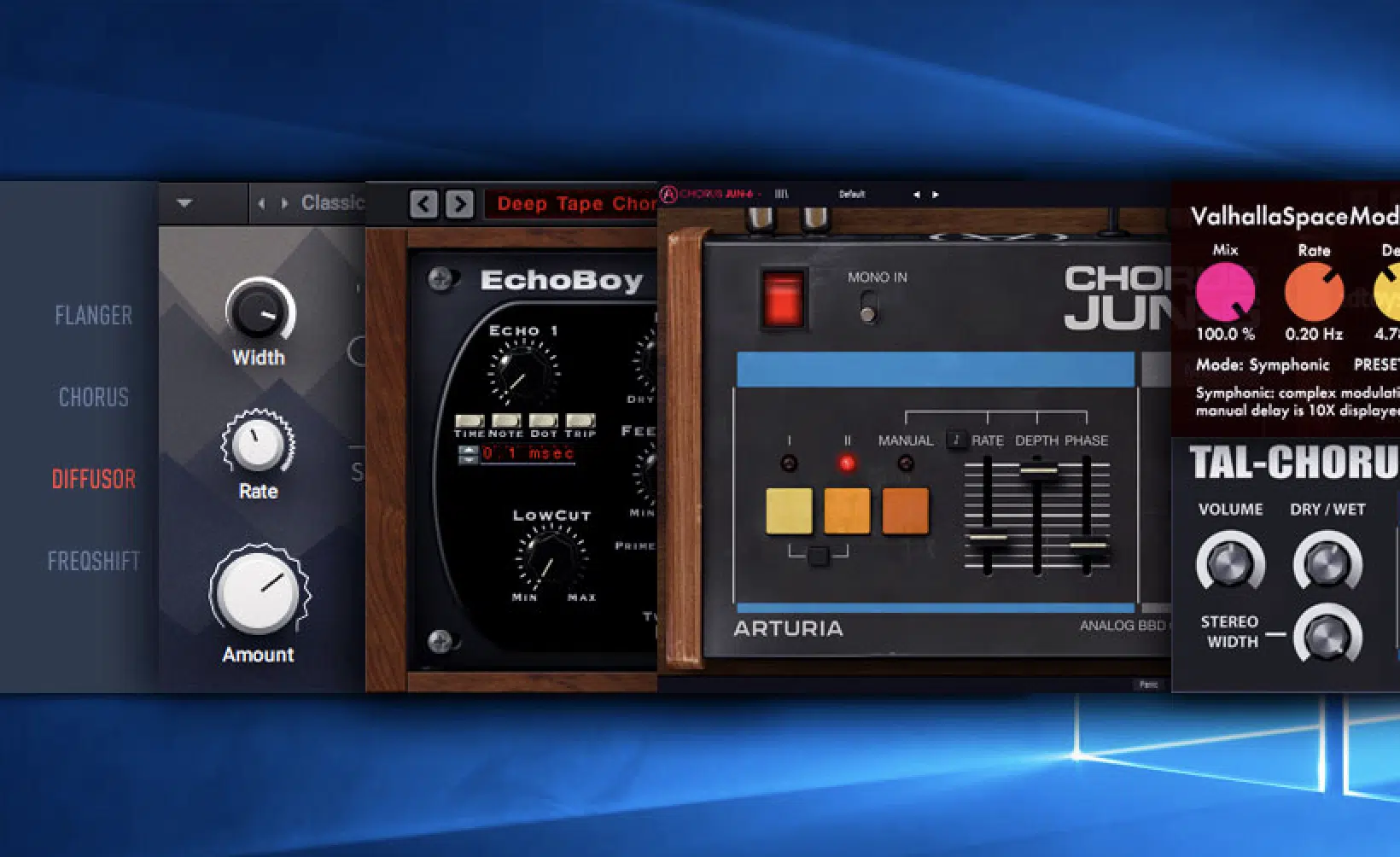
Now let’s talk about the role of the chorus effect in the art of mixing.
As mentioned earlier, the chorus effect is commonly used to add depth and width to the mix.
When applied to vocals or instruments, it gives the illusion of multiple voices or instruments playing at approximately the same time.
This results in a fuller, richer sound, adding a sense of lushness and complexity to the track.
The chorus effect can also add movement to a static or repetitive part 一 giving it more life and interest.
Whether it’s a sustained guitar note or a long vocal line, a touch of chorus can keep the listener engaged and captivated.
-
Shaping Your Sound
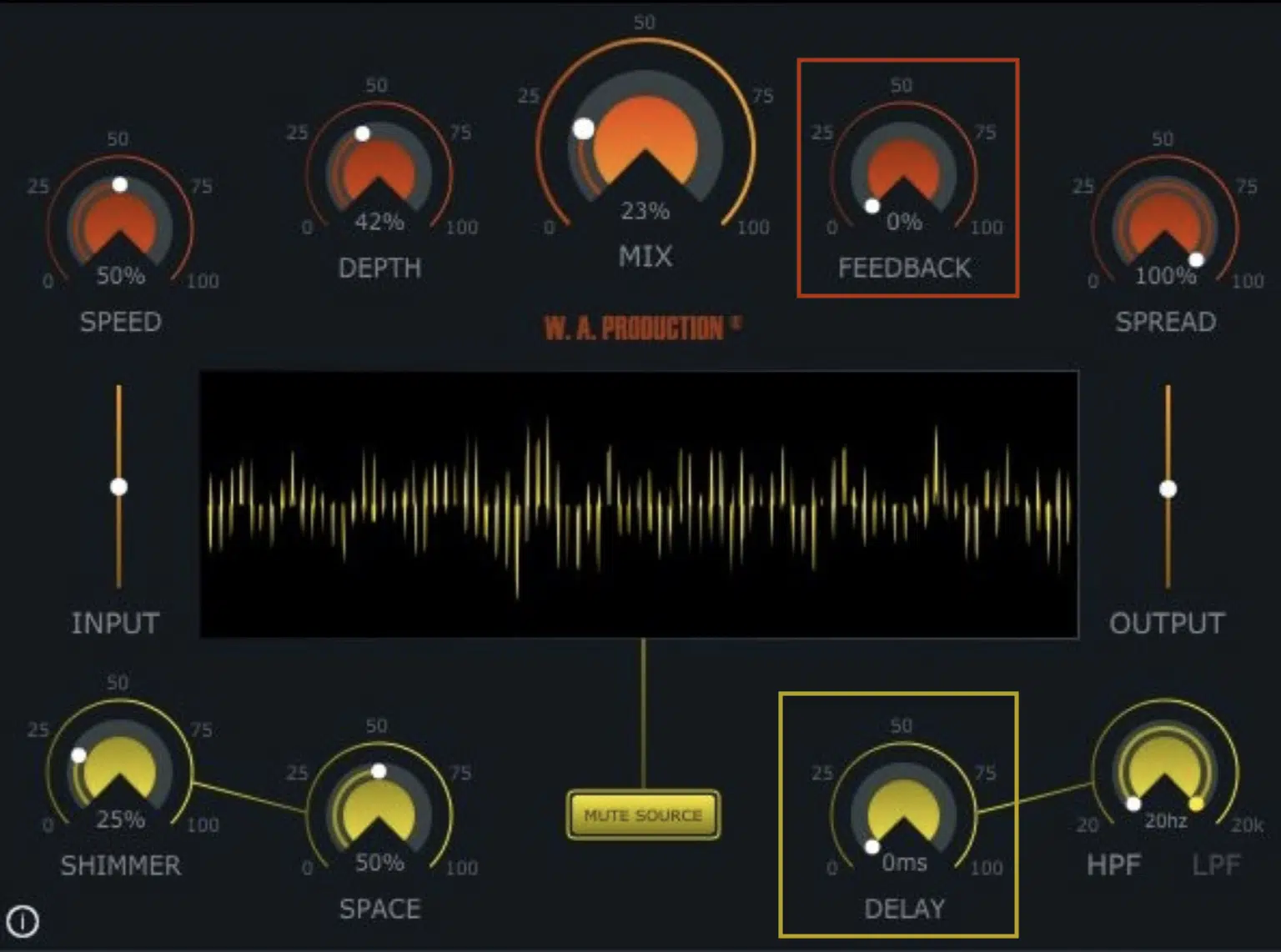
When working with a chorus pedal or plugin, you’ll quickly notice the terms ‘delay times’ and ‘feedback.’
These parameters are pivotal in shaping the chorus effect and lend to its unique character.
Delay times in the context of a chorus effect refer to the short delay between the original audio signal and the duplicated signals.
The duplicated signals are delayed by a few milliseconds (approximately 20 to 50ms for most chorus effects) to achieve the ‘doubling effect‘ that makes the chorus so unique.
Manipulating delay times can lead to a wide range of different sounds, from subtle thickening to extreme modulations.
The feedback control: regulates how much of the processed signal is fed back into the chorus effect.
- More feedback 一 Results in a more pronounced, intense chorus effect
- Less feedback 一 Creates a subtler effect
It’s important to remember that both of these controls should be adjusted carefully.
Too much delay or feedback can quickly make your audio sound muddy, chaotic, unorganized, and unprofessional.
Experiment to find the balance that enhances your mix without overpowering it.
-
Depth, Delay Time, and Rate: The Core Controls
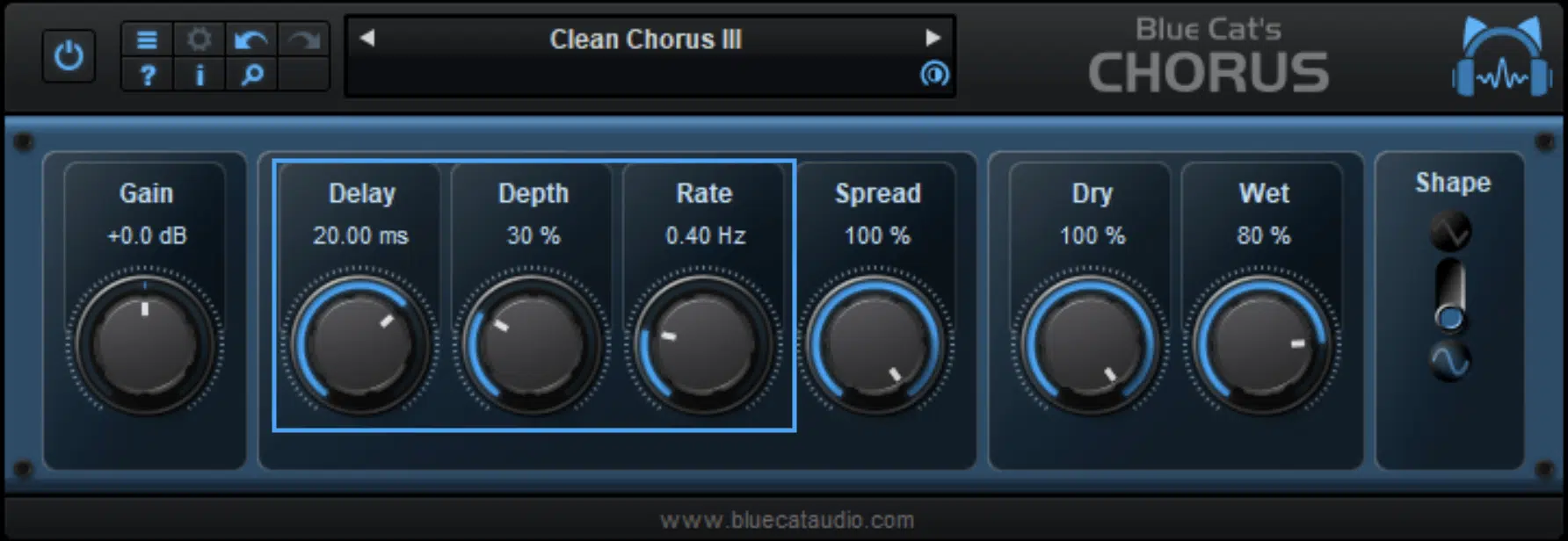
The chorus effect is also defined by three core controls:
- Depth
- Delay time
- Rate
Each of these controls significantly influences the character of the chorus effect, allowing you to fine-tune the effect to your preference.
The depth control: affects the strength of the pitch modulation, in other words, how far the pitch of the delayed signals will swing.
- Higher-depth settings 一 Produce a more dramatic chorus effect
- Lower-depth settings 一 Create a more subtle, nuanced effect
As mentioned earlier, the delay time control determines the time difference between the original signal and the duplicated signals.
While this is similar to the delay times discussed above, this control provides even finer manipulation 一 affecting the tonal characteristics of the chorus effect.
The rate control: adjusts the speed of the pitch modulation.
- A faster rate 一 Will result in a more vibrant, shimmering effect
- A slower rate 一 Will produce a smoother, subtler chorus effect
Like all controls, the rate should be adjusted according to the needs of your mix for the best results.
Exploring Additional Parameters: Mix, Phase & Tone
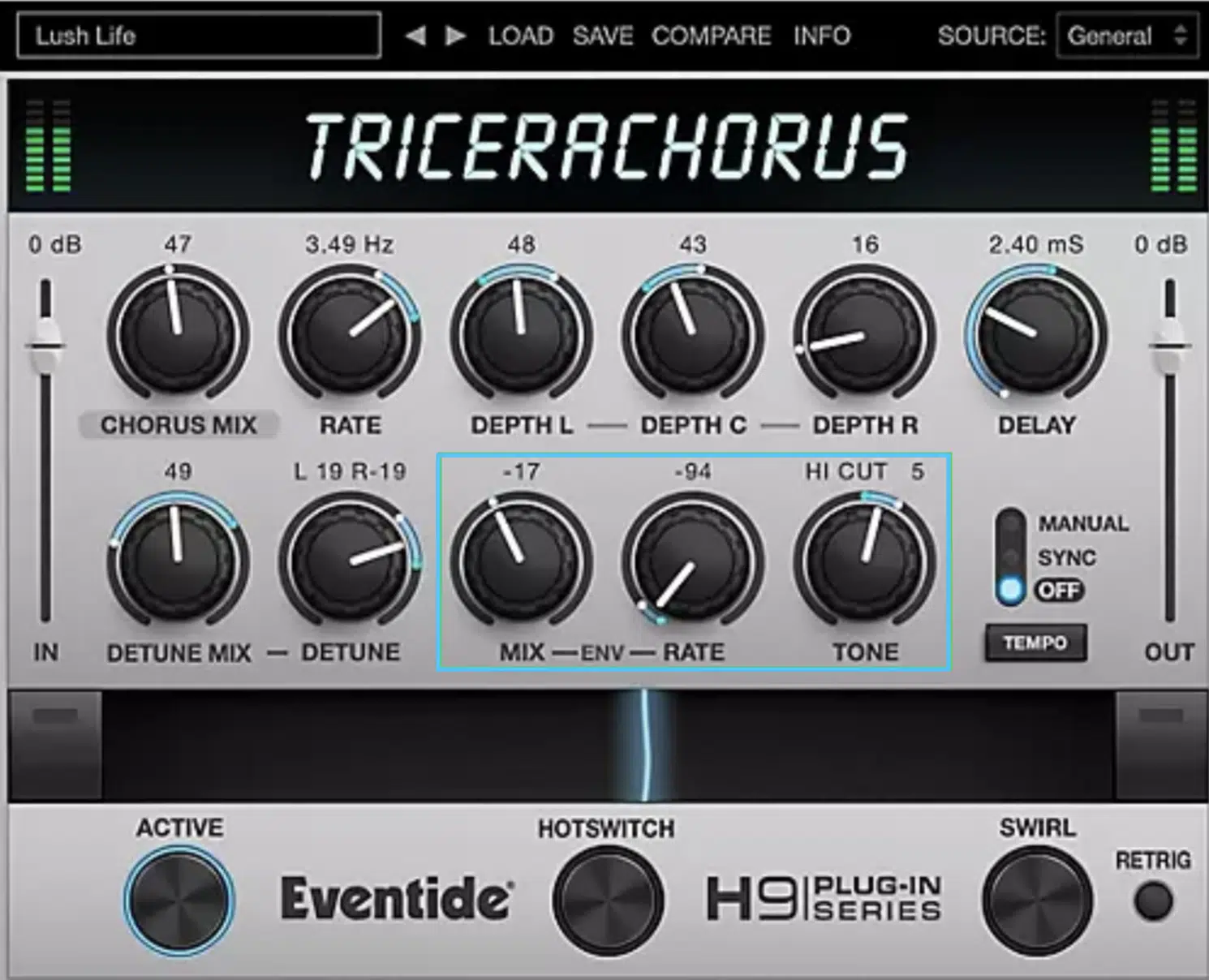
In addition to depth, delay time, and rate, there are other parameters that can further influence the character of the chorus effect.
- The Mix control 一 Balances the dry (unaffected) and wet (affected) signals. Turning up the mix control will make the chorus effect more prominent in the overall sound.
- The Phase control 一 Allows you to adjust the phase difference between the left and right channels. This can help to create a wider stereo field, enhancing the sense of depth and space in your mix.
- The Tone control 一 Can be used to shape the tonal character of the chorus effect.
This can be especially useful when mixing, allowing you to tailor the effect to fit seamlessly into your track.
Applying the Chorus Effect Across Different Instruments
Let’s break down two of the most interesting and popular instruments to which the chorus effect gets applied to.
-
Chorus Effect on Guitars
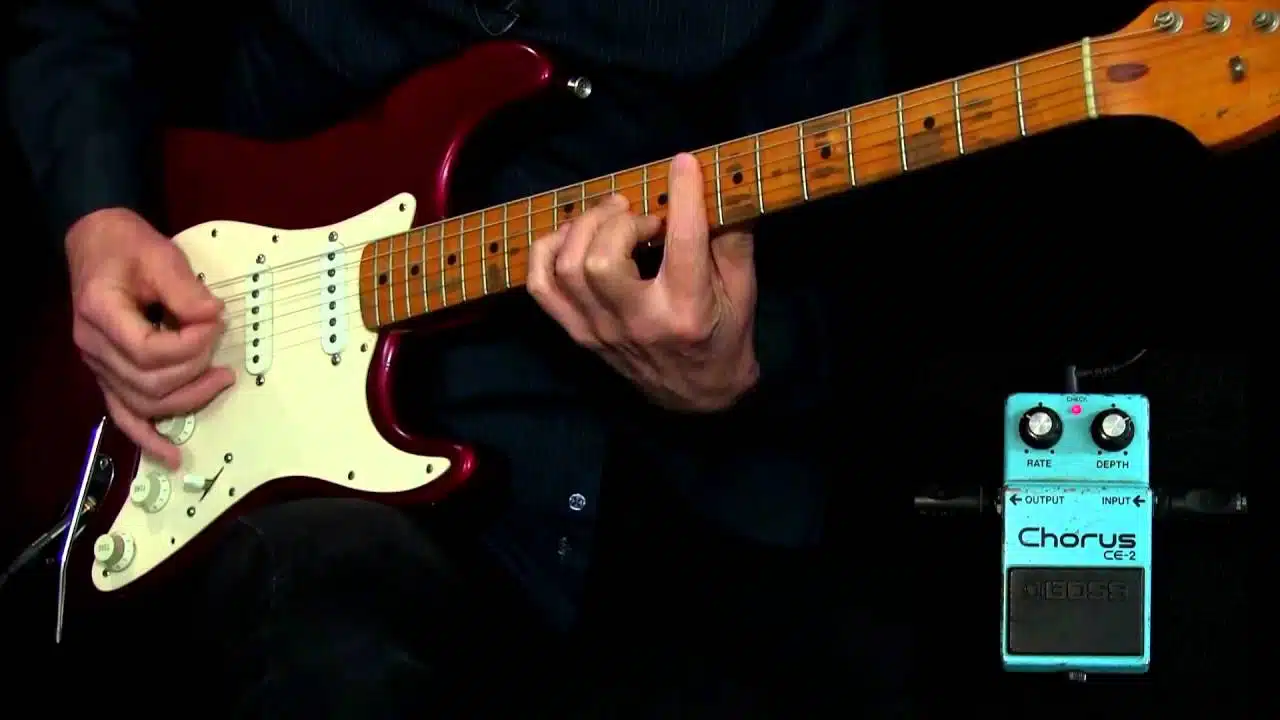
One of the most common applications of the chorus effect is on guitars.
By doubling the guitar signal and subtly detuning the copy, the chorus effect can make a single guitar sound like two or more are playing simultaneously.
This can be particularly useful when recording with only one guitarist or when you want to create a richer, fuller guitar sound without adding additional parts.
The chorus effect can also add a shimmering quality to clean guitar tones, making them sound more lush and vibrant.
Whether you’re aiming for a subtle thickening effect or a dramatic, swirling sound, the chorus effect can greatly enhance your guitar tracks.
Just remember to experiment with different settings to find the sound that best suits your music.
-
Enhancing Vocals With the Chorus Effect
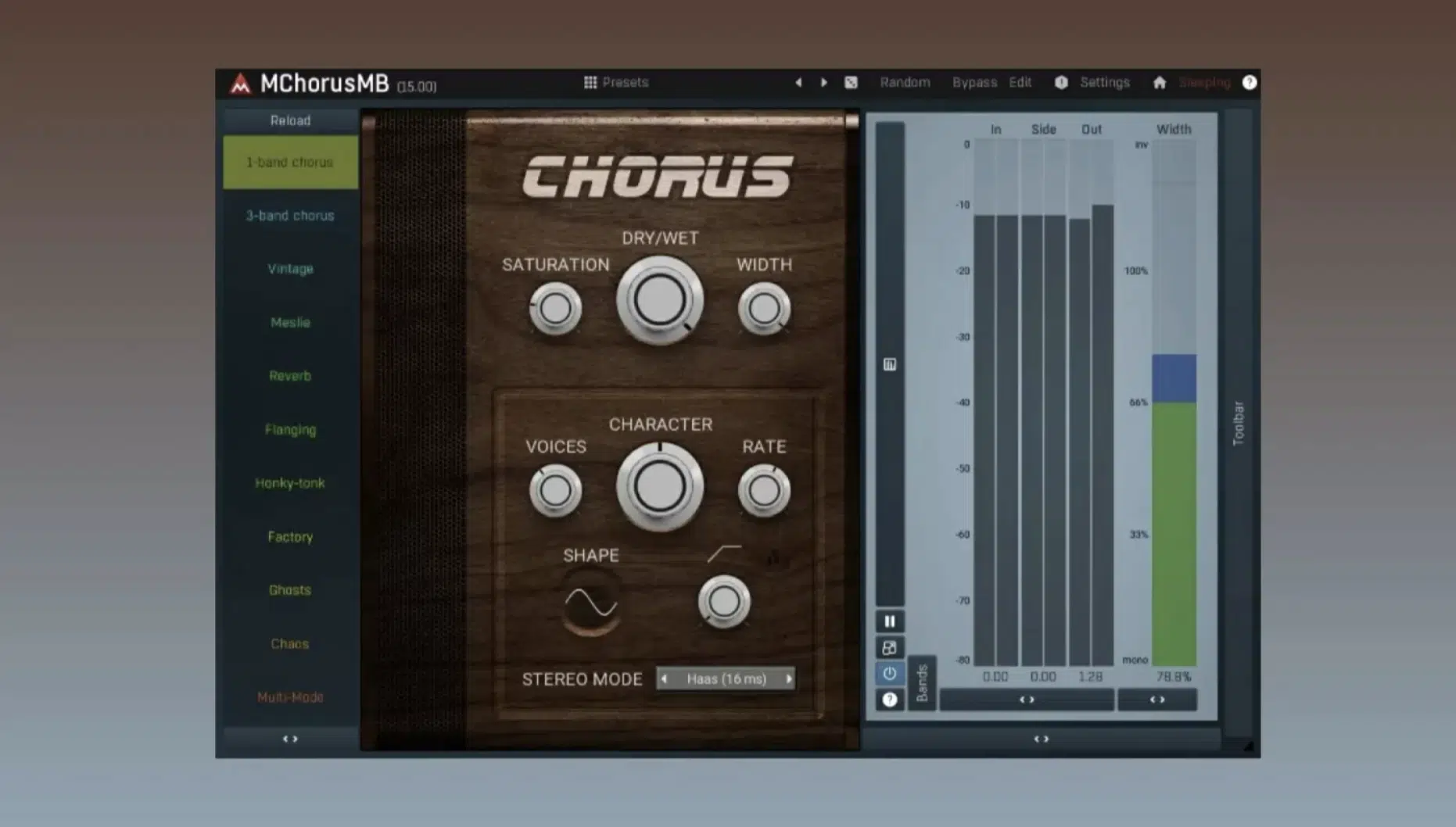
The chorus effect is not just for guitars; it can also be a powerful tool for enhancing vocals.
By creating a doubling effect, it can add depth and width to a vocal track 一 making it sound larger and more powerful.
This can be particularly effective on backing vocals, creating a sense of multiple voices singing in unison.
But be careful when applying chorus to lead vocals… too much can make them sound unnatural and out of tune.
The key is to use the chorus effect subtly on vocals, just enough to enrich the sound without overpowering it.
NOTE: Always trust your ears first and foremost, and adjust the settings to achieve the desired effect.
Tips & Tricks: Maximizing the Chorus Effect in Your Mix
And finally, let’s break down 3 essential tips and tricks that can maximize the chorus effect in your mix.
1. Balancing the Dry & Wet Signal: Ensuring a Natural Chorus Effect
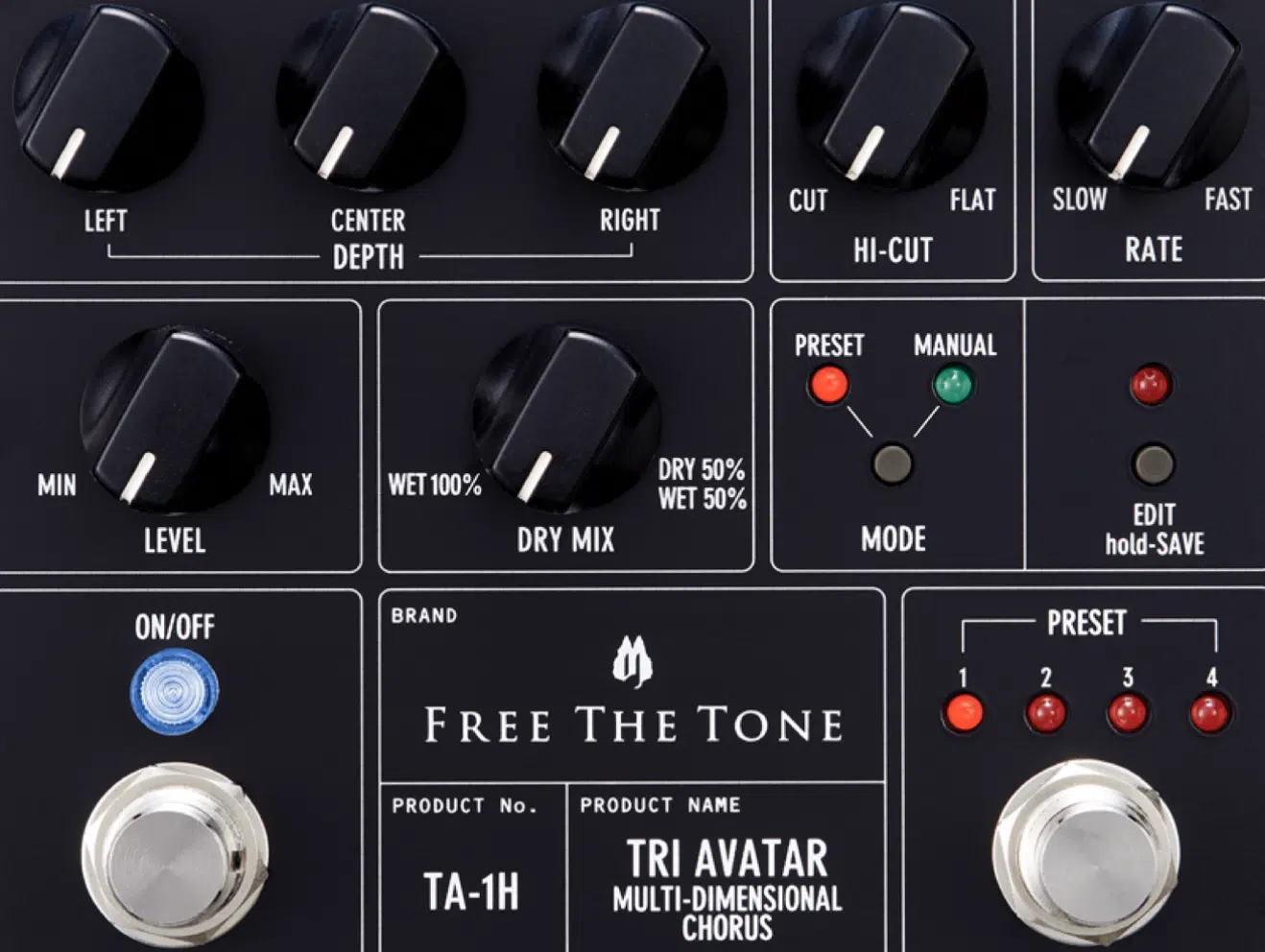
A crucial tip for using the chorus effect effectively is to balance the dry and wet signals.
- The dry signal: the original, unaffected audio.
- The wet signal: the sound after it has been processed by the chorus effect.
If the balance is off, the chorus effect can sound overwhelming and unnatural, or barely noticeable.
Ideally, you want the chorus effect to complement your audio, not overpower it.
To achieve this, start with a 50/50 mix (above) and adjust to taste.
Remember, the character of your original audio should always shine through.
2. Exploring New Sonic Possibilities
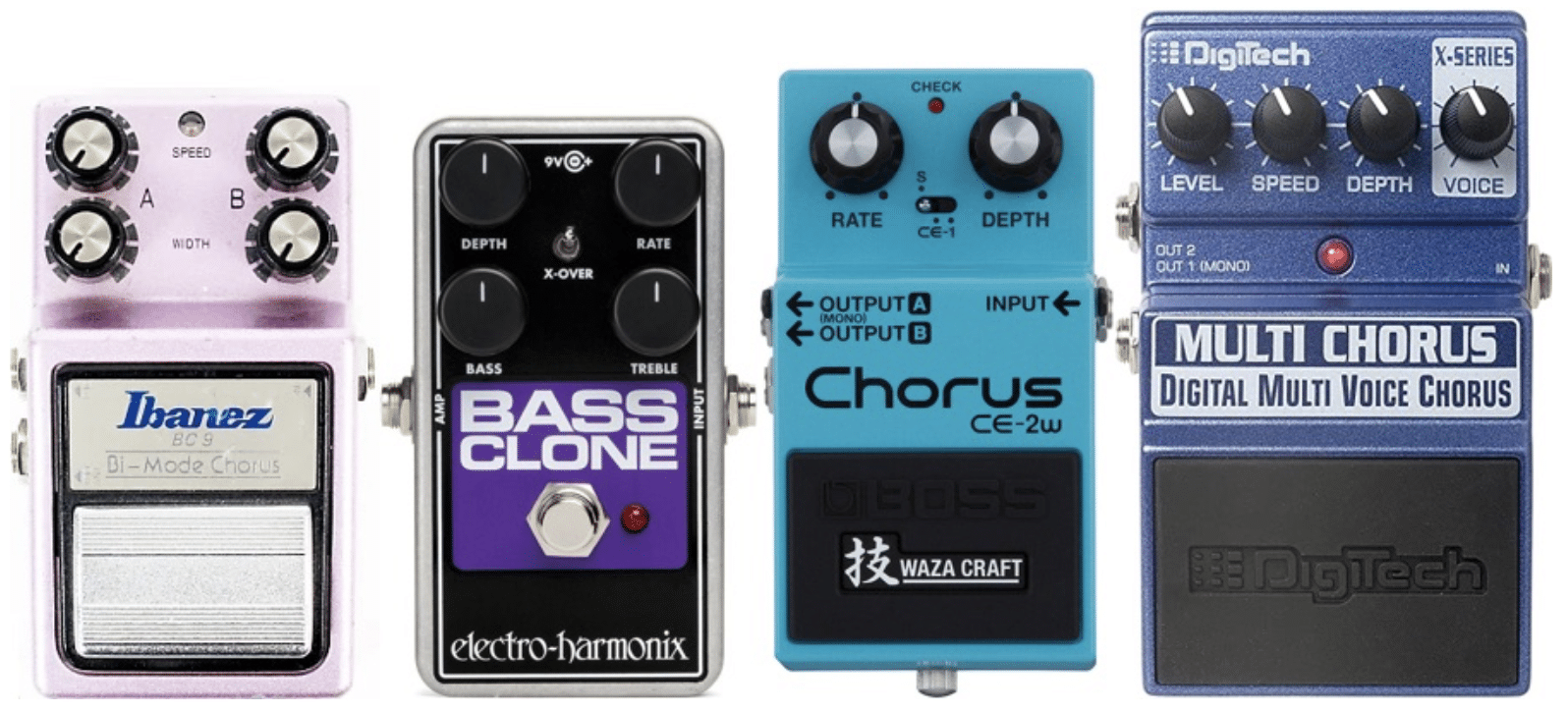
Thinking outside the box with the chorus effect can lead to innovative results.
For example, applying a subtle chorus effect to a bass track can introduce an unexpected sense of movement and complexity.
This can add a layer of intrigue to your song, and draw the listener in.
Additionally, automating the parameters of the chorus effect can breathe life into your mix.
By creating dynamic, evolving sounds that change throughout the track, you can keep your audience engaged from start to finish.
Don’t limit yourself to using the chorus effect only on guitars and vocals 一 try using a stereo chorus on a MONO track to widen the stereo field.
This can create an immersive, spacious feel, enhancing the overall listening experience.
3. Automating Chorus Parameters: Dynamic Sound Sculpting
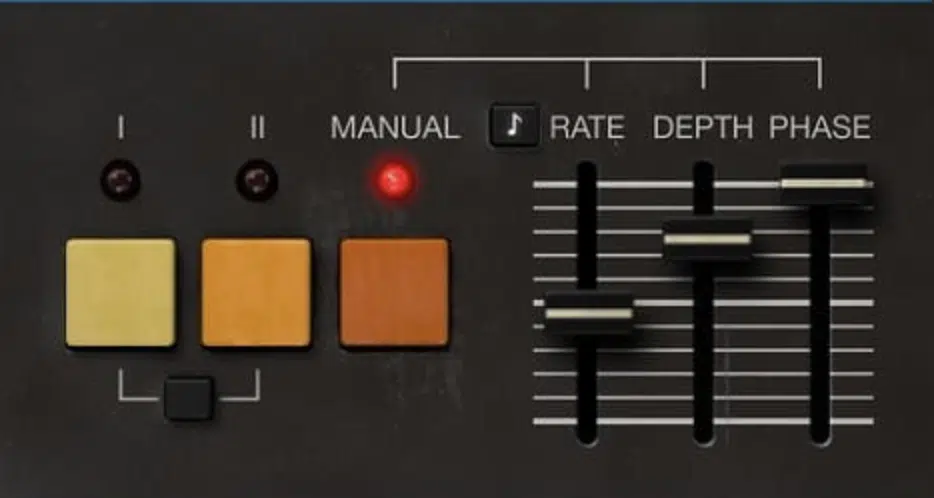
Automating the parameters of the chorus effect is an advanced technique that can greatly enrich your mix.
It allows you to adjust the settings of the chorus effect over time, leading to more nuanced and expressive results.
Experiment with gradual automation for a sense of build-up and tension.
For example, you can start with a subtle chorus effect, and gradually increase the depth and rate as the song progresses.
This can intensify the emotional impact of your music, capturing the listener’s attention.
Another creative approach is to automate the mix control.
This allows you to strategically bring the chorus effect in and out at key moments 一 adding diversity and character to the track.
Just remember, sometimes less is more.
A tasteful application of the chorus effect can make your music stand out in a crowd and ready to upload.
Final Thoughts
By now, you should have a firm grasp of what the chorus effect is, its different types, the role of pitch modulation, and the history of chorus pedals.
You’ve also delved into the finer details of how delay times, feedback, depth, and rate shape the character of the chorus effect.
As well as explored how this effect can be applied across different instruments to enrich your mix.
But remember, the journey doesn’t end here… true mastery of the chorus effect lies in experimenting, tweaking controls, and listening carefully to how each adjustment impacts your music.
Try out different chorus effects, from the subtle to the intense, on various instruments and vocals.
Soon, you’ll develop a keen ear for when and how to use this beautiful effect to its maximum potential.
BONUS: when it comes to adding movement to your melodies, don’t feel like you have to be confined to dynamic processors like side-chain compression.
The chorus effect, a modulation processor, can be your secret weapon for adding extra life and depth to your music.
If you’re looking for some insanely catchy, expertly-designed free melody loops to start experimenting with, we’ve got you covered.
The high-quality, professional-grade loops included in this free pack are the perfect starting point for your chorus effect experiments.
Go ahead and breathe new life into these melodies with the chorus effect – you might be surprised at how much richness and depth you can add!
Until next time…







Leave a Reply
You must belogged in to post a comment.